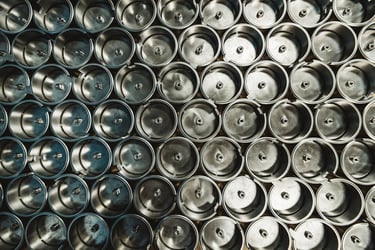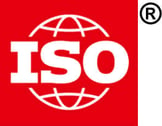Powder metal parts have been synonymous with the automotive industry for decades. Still, manufacturers continue to unearth new uses for powder metallurgy in the auto. Car companies can thank the many recent advances in powder materials -- especially those that improve magnetic performance.
For our Spring 2020 PM Component Spotlight, we revisit the time an iconic auto brand developed an engine mounting system keyed by a Horizon assembly.
Introducing the Revolutionary Engine Mounting System
A tier 1 auto component supplier needed an all-new design to put inside a high-end, luxury sports car. This part, called an engine mount, active engine mount, or drivetrain mount, is an electronically controlled system that changes the stiffness of the engine mounts.
How do active control engine mount systems work? They absorb vibration and movement while idling, but stiffen at higher speeds. The benefits of this adaptable technology are more expansive than you might realize, as the tier 1 supplier and the automaker learned …
The Problem
When you drive around a bend, the vehicle will follow your steering. But, at first, the mass of the engine won’t follow suit. The result is an understeer because of inertial forces from the engine’s mass.
Even a tiny shift in the powertrain (about 20% of the sports car’s weight) could dilute handling dynamics and taint steering accuracy.
This problem prompted the luxury car maker to seek an adaptive mounting solution. Make a car too stiff, and the ride is unpleasant. Make a drive too soft, and the handling response is compromised.
Other designs existed in the market when the automaker decided to take its first crack at it. Unfortunately, they were low-cost and appropriately low-performance. The automaker wanted a high-performing component that reduced its nagging engine vibration issues.
Introducing New Uses of Powder Metallurgy
The car maker wanted these custom metal components to fit into a very small package. Room was precious in the overall vehicle design.
The automaker and tier 1 company turned to powder metal parts in a quest to maximize magnetic performance of the part. To achieve the level they were looking for, component density had to exceed 7.35 g/cc.
Why was density important? The automaker gave the tier 1 supplier a small housing and left the supplier to figure out how to fit the technology inside. Space was a problem.
It was Horizon’s turn to develop a solution for two challenges -- permeability and saturation induction -- to help the supplier solve the size issue from there. Although we weren’t clued in on the exact design parameters, two important considerations were magnetic response and saturation levels.
The Solution
You can find advantages of powder metallurgy in both its materials and its manufacturing processes. In this case, Horizon used both.
The drivetrain uses an electrically generated magnetic field to stabilize itself within the vehicle. Here’s where we came in:
Powder Metal Materials
The very existence of metal powder is driven by its ability to be shaped any way you want. We were able to create a complex 3D design that made the component more compact than its cousins on the market. Specifically, this benefited the outer pole piece and inner cap
Improving magnetic efficiency required a more specific solution. We recommended a specific magnetic-grade material with additives that enhance our ability to achieve the requested properties. There was one component in the assembly that was a soft magnetic composite (SMC) part.
To satisfy both the permeability and saturation induction requirements within a tight space, we determined that a FY4500 17-Y iron-phosphorus material was not adequate. The component would require increasing the density beyond the specifications in the Standard 35, to a 7.35 g/cc minimum density.
Powder Metallurgy Processes -- Advanced Compaction & Sintering
What allows us to do everything we just talked about and still provide value pricing for the customer? We had to consider not just the materials, but also the compaction and sintering techniques.
Rather than buying off-the-shelf, we started with a patented, proprietary, high-purity material blend. We next put that material through an advanced compaction process to form the shape. Then, sintering in a controlled atmosphere design to enhance magnetic performance enabled us to meet these objectives with a single-press, single-sinter technology.
(The soft magnetic composite part did not go through the furnace; that material type is never sintered.)
Creating a consistent air gap between the outer pole and the inner plate of the assembly was critical to performance. We chose to sinter braze the two pieces to maintain the narrow gap, reduce the cost and optimize magnetic properties.
The combined sintered and SMC assembly represents an interesting and impressive marriage of technologies. The results below seem to agree!
 The Result
The Result
Horizon’s powder metal assembly helped smoothen the car’s ride and improved its overall performance.
Typically, if you accelerate from a high RPM, vertical oscillations slow down the drivetrain. Our brazed assembly helped fixed that, providing higher and more consistent drive force at the rear axle. The result was improved 0-60 acceleration with increased traction and stability under load transfer and during high-speed cornering.
The new mounting system neutralized the effect of inertial forces from the engine. When cornering, the vehicle was now able to counter the associated inertial effects of turning a corner, reducing lap times.
The mounts hold the powertrain tightly for a more direct driving field when driving more “sportily.” During easy driving it relaxes its hold, especially in the engine, for:
- Less vibration
- Reduced noise
- Greater comfort
In other words, the assembly’s stiffness and damping adapts to changes in driving style and road surfaces.
Cost Reduction
We can’t forget about costs, powder metallurgy’s other calling card!
The assembly not only reduced the volume and weight of the engine mount, it also consolidated costs. The ability to create a shape from scratch with powder metal reduced scrap waste and the need for secondary operations.
The end consumer benefited, too. A lighter car is a more fuel-efficient car.
Where Else Can Powder Metal Take Us?
You can’t just buy the cheapest off-the-shelf solution you can buy and expect top-shelf performance.
This example was three designs ago, but it remains a fascinating study in combining materials and technologies to conserve space, improve magnetic performance, and reduce costs.
With powder metallurgy, this success can be not the exception, but rather the norm. To see other examples of ideal components for metal powder manufacturing, read more of our PM Component Spotlight series below. Or, if you want to hear more about how we can solve similar design problems, download the free handbook below:
Other Component Spotlights:
- WINTER 2020: Lamination + Magnetic Powder Combo for Ceiling Fan Motor
- FALL 2019: Bolt Action Rifle Trigger Mechanism



